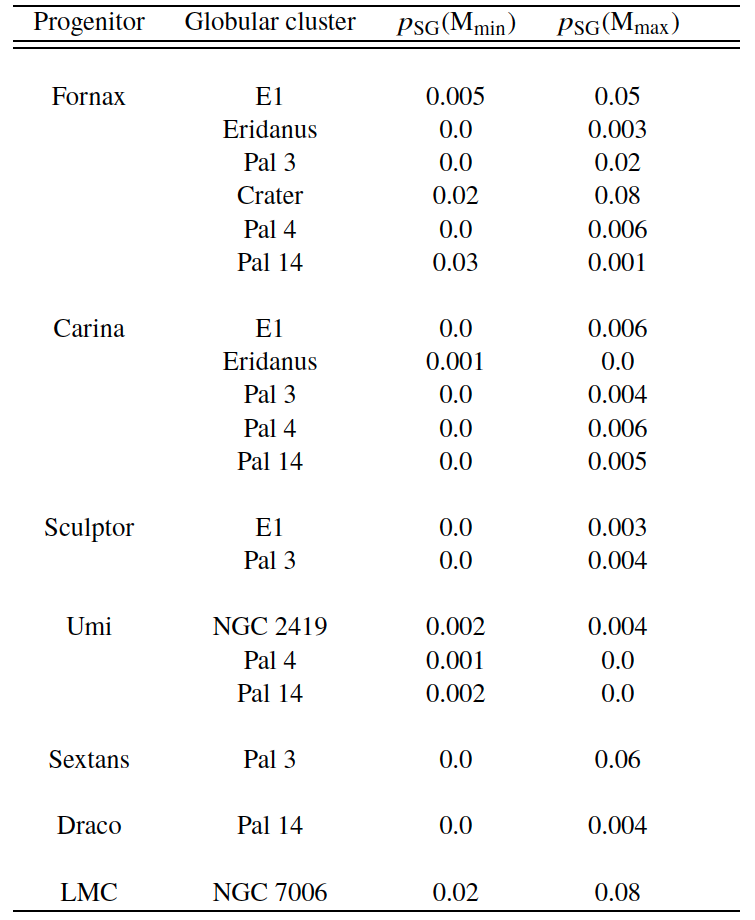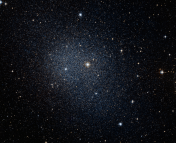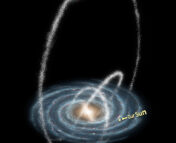Title: No globular cluster progenitors in Milky Way satellite galaxies
Authors: Pierre Boldrini, Jo Bovy
First Author’s Institution: 1. Sorbonne Université, CNRS, UMR 7095, Institut d’Astrophysique de Paris, 98 bis bd Arago, 75014 Paris, France 2. Université de Lorraine, CNRS, Inria, LORIA, F-54000 Nancy, France
Status: Accepted to MNRAS
I’ve described globular clusters (GCs) as glittering jewels and ancient relics (see this astrobite). If you think you don’t know much about them, you are not alone! Astronomers also debate about how they formed and where: they could have formed in dark matter clumps (like a mini galaxy), or in gravitationally bound gas clouds (like a more dense version of normal star formation).
They are very old and sturdy; because the stars in them are so closely packed, they can survive galaxy mergers and still be observed today. There’s evidence to indicate some GCs in the Milky Way (MW) were not born here. Given that many dwarf galaxies have fallen into the MW, a question naturally arises: did the accreted satellite galaxies bring GCs into our Galaxy?
<<< Rewind
Thanks to the Gaia mission, we have accurate positions and velocities of 170 GCs in the MW. The velocities tell you how tightly GCs are bound to the Milky Way. GCs that have high velocities and orbits reaching far beyond the MW center are more likely to have been deposited by a satellite. The authors of today’s paper rewind their orbits and check whether any GCs could have been part of the known satellite galaxies.
If you want to know where GCs came from, simply rewind their orbits and see where they were in the past. Of course, in practice it is never that simple. Starting from the position of the GC, you calculate the gravitational force it feels from the MW, which then changes the velocity of the GC and takes it to a different position. To rewind orbits carefully, you need to account for the past evolution of the MW: the authors model how the MW grew in mass as the satellite galaxies lost mass. You also need to include the gravitational effects from other MW satellites like the LMC.
Once the orbits have been calculated, the authors define two criteria for association. For a GC to be associated with a satellite galaxy, it has to be close in physical distance and within the galaxy’s escape velocity. The authors checked this method on the Sagittarius dwarf galaxy with known GCs and recovered the association. It works! Then what’s the result for the rest of the MW GCs?
Results

When the authors apply the method to check all known MW GCs, they do not find any GCs that could be associated with the known satellite galaxies. Is that a disappointment? Not necessarily!
Even though the authors did not find any association to the 11 known galaxies, many GCs are still believed to be accreted based on their composition. Then why do their orbits not trace back to any progenitor? The authors assumed GCs always had only stars and no dark matter, but if GCs formed with some dark matter content, then the modeling would lead to a wrong orbit. Another possibility is that the progenitor satellite galaxy could have dissolved and is not observable today as one of the 11. Also, our assumption about the MW mass history could be wrong and affected the reconstructed orbits. In any case, the origin of the accreted GCs are still a mystery.
Astrobite edited by Ciara Johnson
Featured image credit: NASA




